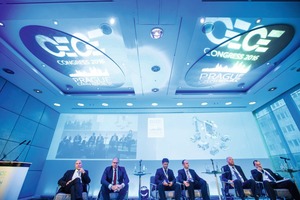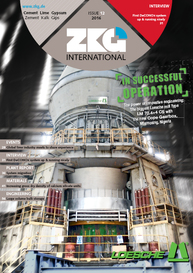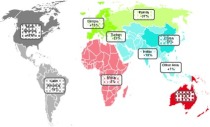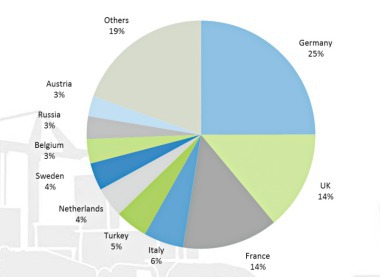European construction machinery sector embraces digital transformation as driver of success
Close to two hundred leaders from the construction equipment industry in Europe as well as technical experts, sales managers, trade press and international trade association representatives gathered at the CECE Congress 2016 from 05.10.-07.10.2016 in Prague/Czech Republic.
Transforming business
The main theme of this year’s congress was ‘Industry in Transformation – Drivers of Success’. The two-day programme with dozens of speakers explored a multitude of relevant trends, from the transformational forces in the Central and Eastern European region, to the wave of digitisation currently enveloping industry, to the global economic outlook and the latest technical developments in the field of electrification as well as in the organisation of the construction site of the future. The CECE Congress 2016 was hosted by the Czech national association member of CECE, SVSS, and made possible with the special support of Doosan Bobcat and Ammann which both maintain substantial production facilities in the country.
Industry outlook
Industry confidence is supported by the performance of the European market, where a stable development at high levels in Northern and Western Europe underpins a continuing yet slowing recovery in Southern Europe, and fairly weak growth in Central and Eastern Europe.
Despite the strong demand in the first half of the year, the industry sentiment looking forward is more subdued. The CECE business climate index was back at positive levels in September, having digested a steep dip in July following the Brexit vote, and after eight months of gradual improvement since the autumn of 2015. Concrete equipment manufacturers are currently the most optimistic sub-group within the CECE Barometer, while road equipment manufacturers are least optimistic about growth. Demand from the mining sector continues to be very weak, which has a restraining effect also on construction equipment sales.
Markets at a glance
France recorded a plus of 53 %, recovering from a very bad year in 2015. The German market (+14 %) is reaching record levels, and the UK (-12 %) just comes from record levels. Italy and Spain posted growth of +33 % and +11 % respectively. Uncertainty prevails for the Russian and Turkish markets, though the first seems to have hit the bottom. Sales in Russia were 4 % up after six months, but still at a very low absolute level. As an illustration, the Russian market is currently smaller than the Austrian, Swedish and Norwegian markets.
The Central and Eastern European region is seeing strong growth in the construction sector, primarily fuelled by infrastructure investments. Construction sector output as forecast by Euroconstruct for the Czech Republic, Hungary, Poland and Slovakia is set to grow by +4.1 % in 2016, +5.7 % in 2017 and +6.7 % in 2018. Poland is clearly taking the lead: civil engineering growth from 2015 to 2018 is anticipated to be +13 % per year. 2014 and 2015 were already good years for the construction industry in the CEE region (+5 % growth each year). Against this backdrop, it is a bit surprising that equipment sales in 2016 are rather weak (-18 %). Reasons might be a base effect – the first half of 2015 was very strong – and maybe some impact of the Russia/Ukraine turmoil.
Building construction equipment sector
The building construction equipment sector continued its growth in Europe with a plus of around 30 % in the first half of 2016. This is not surprising, given that European residential (+3.1 %) and non-residential (+2.5 %) construction industries are seeing the strongest growth since 2007. While levels of building activity are still well below pre-crisis levels, it is notable that recovery has begun in regions where there hasn’t been any growth in recent years.





